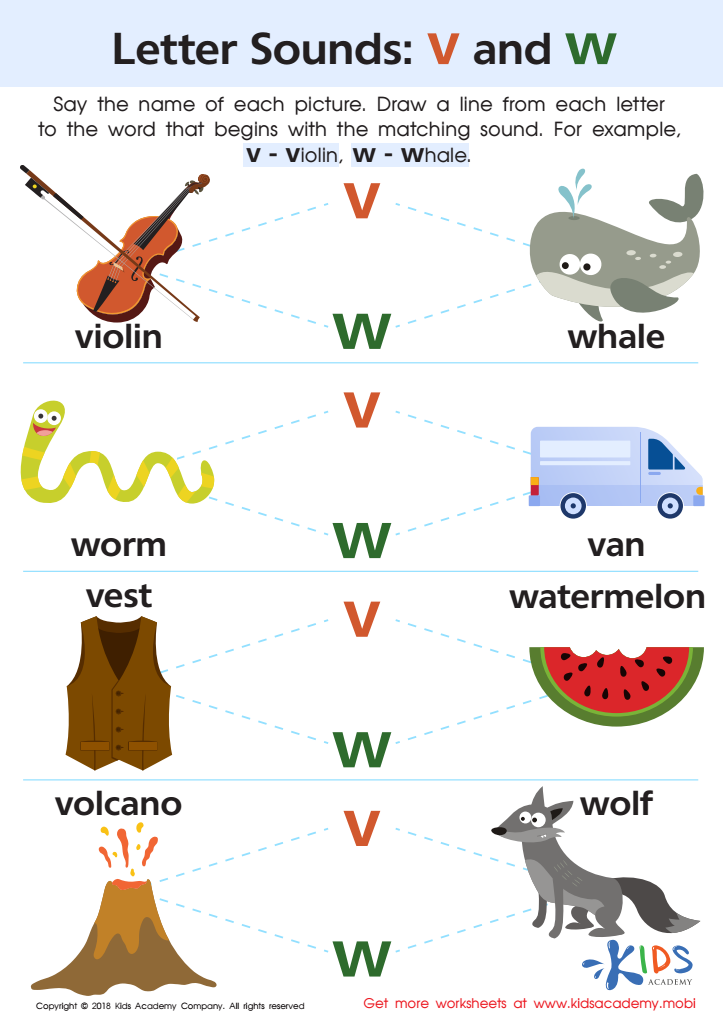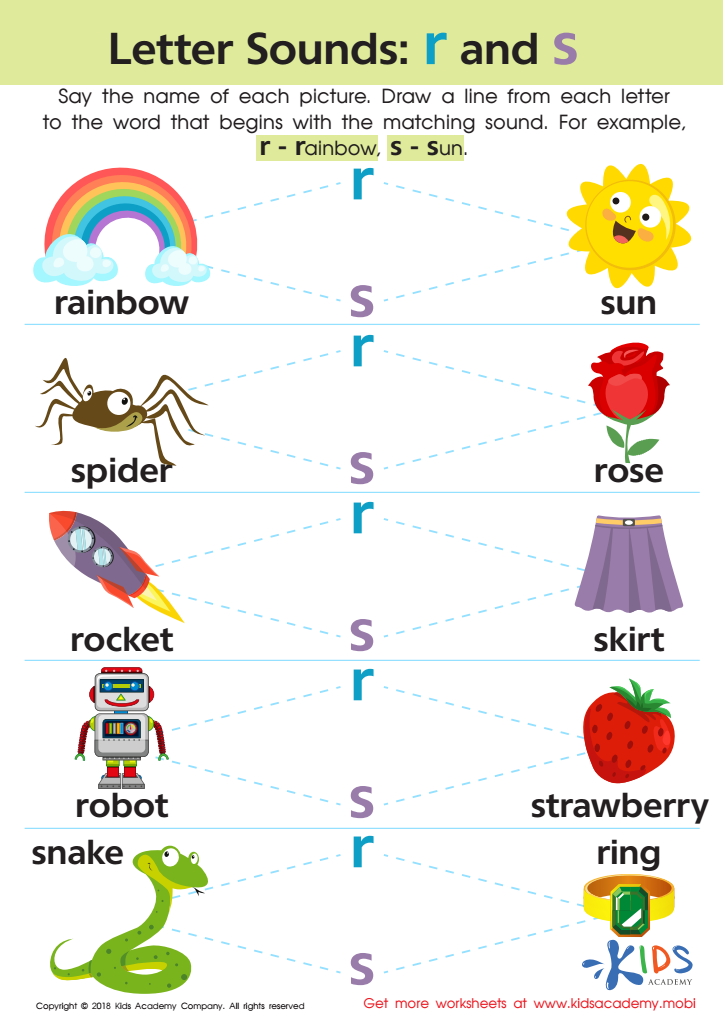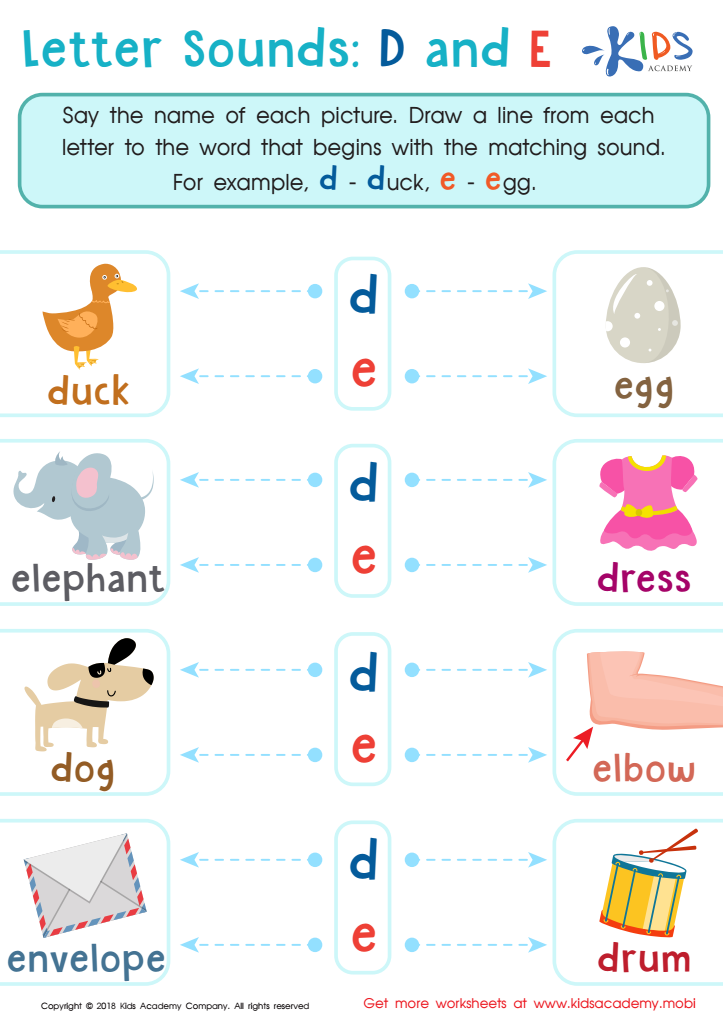Handwriting practice Normal Letter Sounds Worksheets for Ages 4-7
4 filtered results
-
From - To
Discover our engaging Handwriting Practice Normal Letter Sounds Worksheets designed specifically for children ages 4-7. Each worksheet seamlessly integrates letter sound recognition with handwriting practice, fostering essential literacy skills in young learners. Fun and interactive, these worksheets encourage children to trace and write letters while connecting sounds to familiar words and pictures, enhancing early phonemic awareness. Our carefully crafted activities not only support the development of fine motor skills but also build a strong foundation for reading and writing. Perfect for both classroom and at-home educational adventures, these worksheets make learning an enjoyable, confidence-boosting experience. Explore today!


Letter P Sound Worksheet


Letter V and W Sounds Worksheet


Letter R and S Sounds Worksheet


Letter D and E Sounds Worksheet
Handwriting practice and understanding normal letter sounds are foundational skills for children ages 4-7 and crucial components for their literacy development. At this formative stage, children’s brains are highly receptive to learning new skills, which sets the groundwork for future educational success. Handwriting practice helps improve fine motor skills, hand-eye coordination, and muscle memory, fostering improved writing skills and legible penmanship. These abilities are essential for effective communication and academic success.
Additionally, recognizing and practicing normal letter sounds bolster phonemic awareness, an integral aspect of early reading skills. This understanding enables children to decode words, improving their reading fluency and comprehension. Without these literacy fundamentals, children may struggle in language-based subjects, hindering their overall academic performance.
Parents and teachers play a critical role in supporting these early literacy skills. Consistent handwriting practice and phonics education can transform a child from struggling to becoming a confident learner. Engaging with these skills at an early stage ensures children meet vital developmental milestones, fostering a lifetime love of reading and writing. Committing time and effort toward these practices equips children with the necessary tools to succeed academically and socially, strengthening their ability to express ideas, think critically, and communicate effectively.
 Assign to My Students
Assign to My Students













